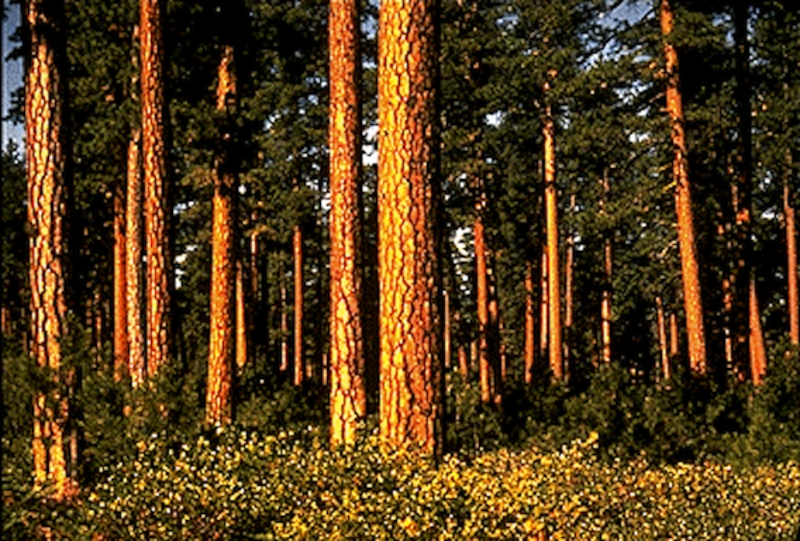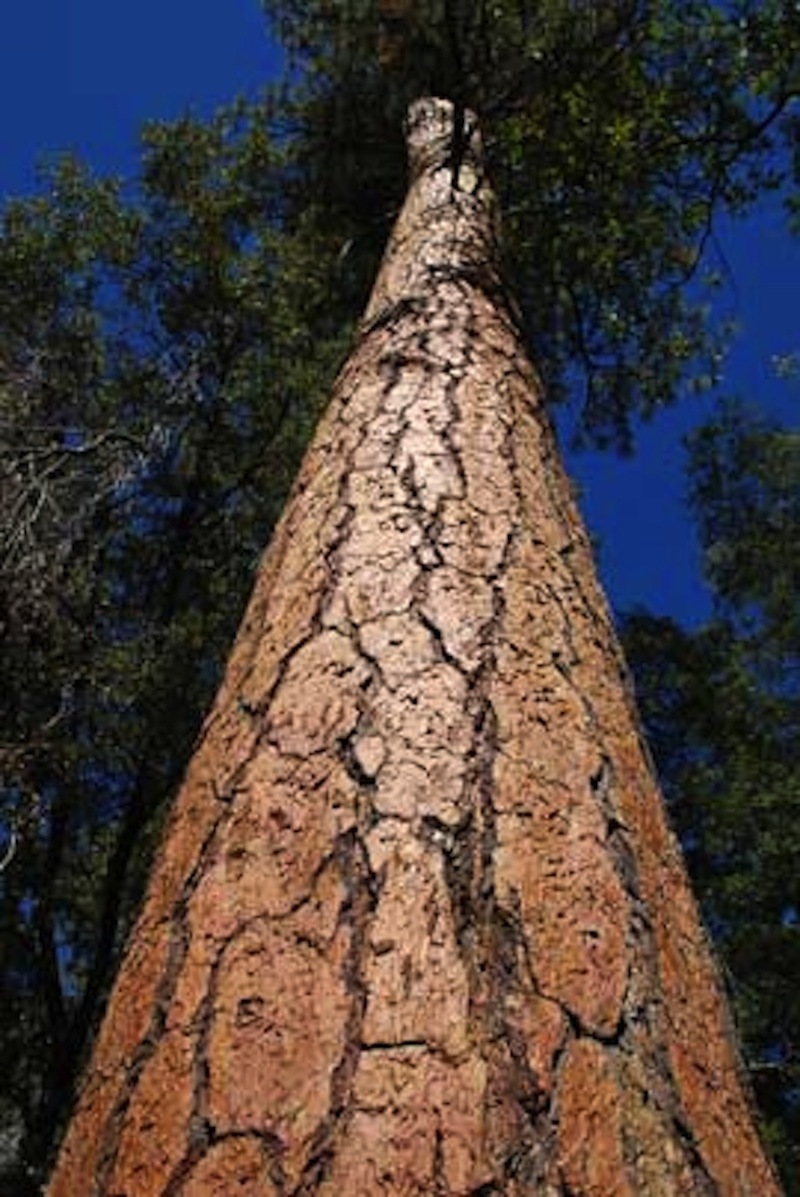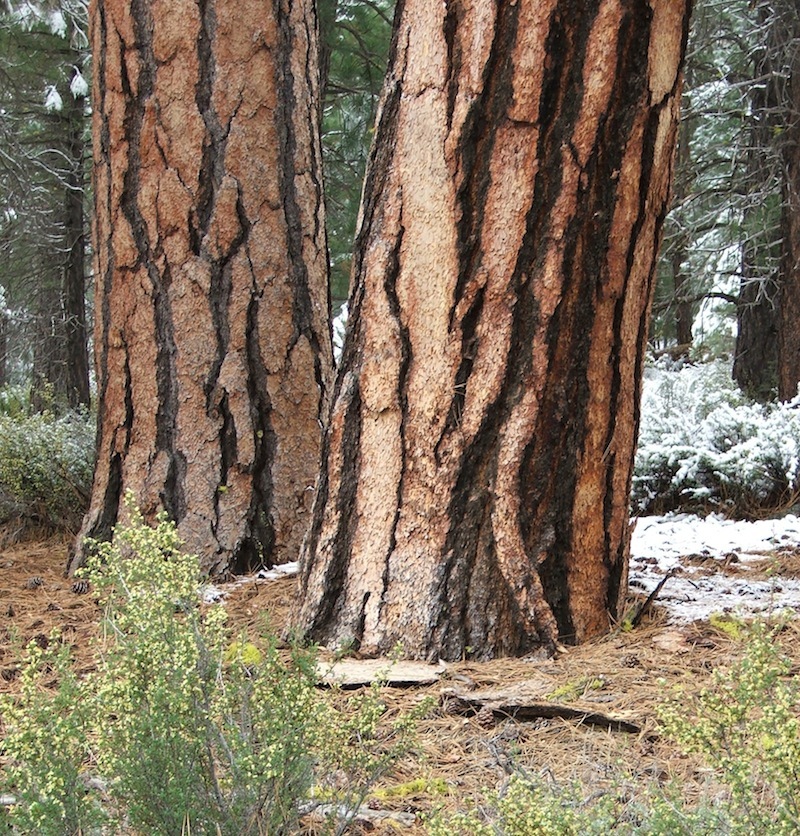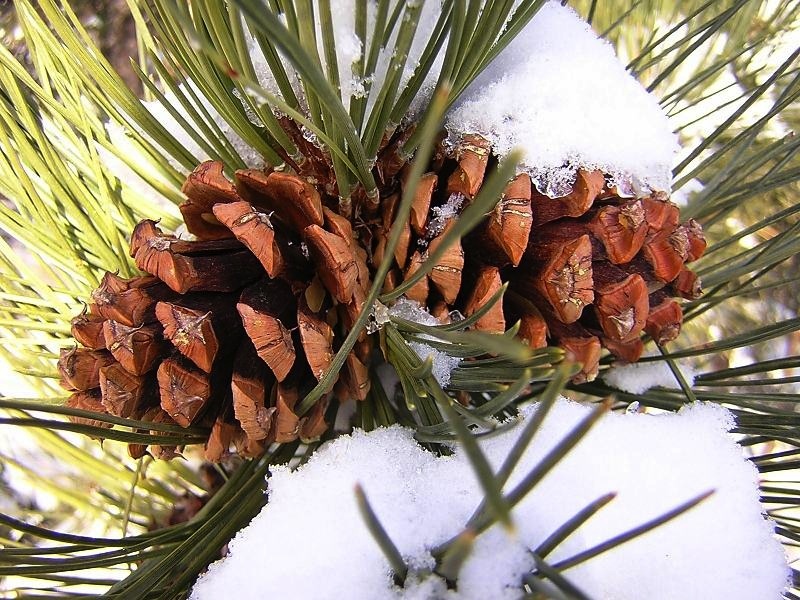Ponderosa Pine : Identification
The Ponderosa pine is easily identified by its bright orange-brown bark, which becomes more vibrant as the trees mature. The bark is divided into plates by a network of dark grooves that make it look like a huge jigsaw puzzle. Fun fact: when the temperature is hot, the bark can give off a vanilla scent.
As young Ponderosas mature and grow, their lower branches normally die. In the past this was due to repeated fires, causing mature trees to develop without branches on their trunks. This development also worked to prevent ground fires from going up the branches and burning the crown of the tree. (See “Natural History: Adaptation to Frequent Fires” for more information.)
Ponderosas have broad, open, irregularly shaped or cylindrical crowns with an airy canopy. (Note that the crown of a tree is the branches, leaves, and reproductive structures that extend from the trunk).
The branches of the Ponderosa are staggered and bear large buds at their tips. These buds are protected by bundles of three characteristically long (5-to-8 inch!) needles. These needles are sharp and when crushed they can smell like turpentine and citrus.
The mature trees are about 4 feet in diameter with a height of 130 feet or taller. The biggest ones alive now are over 7 feet in diameter and over 200 feet tall!
Ponderosa pines can also be identified by their red-brown pinecones, which are about 3-to-5 inches long and oval-shaped. However, they can also appear spherical when they are dry and the scales are open. On the back of each scale you will notice a sharp prickle-ouch!




